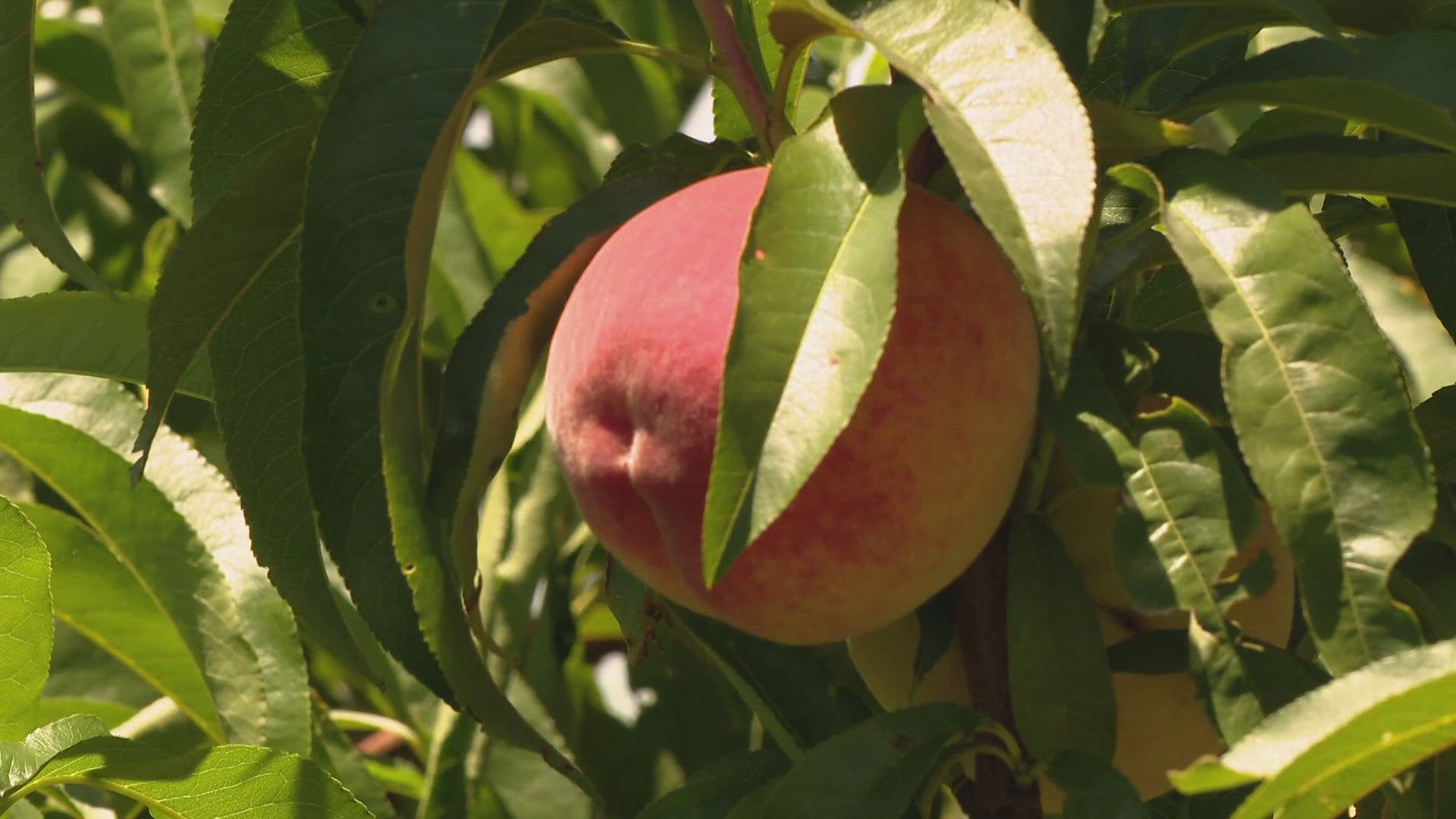ST. LOUIS — Fruits, flowers and crops of all varieties are seeing early growing seasons throughout the St. Louis region.
Strawberries surprised farmers at Thies Farm in Maryland Heights by blooming in late April rather than mid-May. Wild blackberries, which tend to be ready for picking in July, have reportedly begun to ripen in areas around southern Missouri. Eckert's Belleville Farm said their peach crop ripened two weeks ahead of schedule.
PREVIOUS COVERAGE: Peach season kicks off early at Eckert's Farm in Belleville
Are these early blooms and ripenings a fluke? Or will they be the new normal for the St. Louis region? We dug our hands in the dirt and analyzed the data to VERIFY.
The question
Will St. Louis' future growing seasons be earlier than normal?
Our sources
The answer
Not only will crops around St. Louis ripen earlier, but numerous officials also say the crops' growing seasons will also lengthen.
What we found
There are numerous reasons why St. Louis' growing season is seeing changes, but overall rising temperatures are the base cause.
NPN, a collaborative project with the United States Geological Survey and the University of Arizona, mapped this year's first leaf and blooms. The findings showed the vast majority of the eastern half of the country, Missouri included, saw leaves and blooms nearly 20 days earlier than normal.


This year's early bloom is a historical anomaly, but may be the new normal.
The USDA last year updated its national Plant Hardiness Zone Map, which gardeners and growers nationwide use to determine which perennial plants are most likely to thrive at a specific location. The update moved the St. Louis region from zone 6b to 7a. St. Louis had been labeled since 1976.
The change means that the St. Louis region's minimum temperatures, on average, are now between 0 and 5 degrees rather than -5 to 0 degrees.
"Winter temperatures have been rising across much of the country, and this trend is expected to continue into the future," a USDA 2022 report said. "For example, minimum winter temperature could rise at least 8–9 °C (14.4–16.2 °F) across much of the Northeast and Midwest under a high emissions scenario."
The projected warmer winters mean crop seasons will see earlier and earlier starts if human-caused emissions aren't curbed and temperatures continue to rise.
Growing Degree Days, or the number of days in a year when crops grow, are also projected to increase in Missouri and across the nation over the next 50 years, according to the USDA report. Increases in Growing Degree Days have also correlated with increased water and heat stress, longer pollen seasons and longer pest seasons.
"The projections suggest that the growing season will increase substantially in all areas, especially under the high emissions scenario depicted here," the USDA report said.
"Though some plants may have improved growth with an increase in GDD, this measure does not incorporate estimates of precipitation , which have greater uncertainties in climate change modeling. Many models suggest precipitation will occur in the form of larger extreme events (more drought between heavy rainfall events) and with more unevenness in seasonality (lower proportion in late summer-autumn)."
Lastly, Heat Zones, which map areas of heat stress for plants and animals, including humans, are also projected to rise through the end of the century. The St. Louis region has historically had between 61 and 90 days a year with temperatures above 86 degrees, but is projected to have between 151 and 180 days a year with temperatures above 86 degrees.
VERIFY
Do you have a question you want us to VERIFY? Email verify@ksdk.com with your claim.
Craving more VERIFY? See every St. Louis-area claim we've looked into below.

